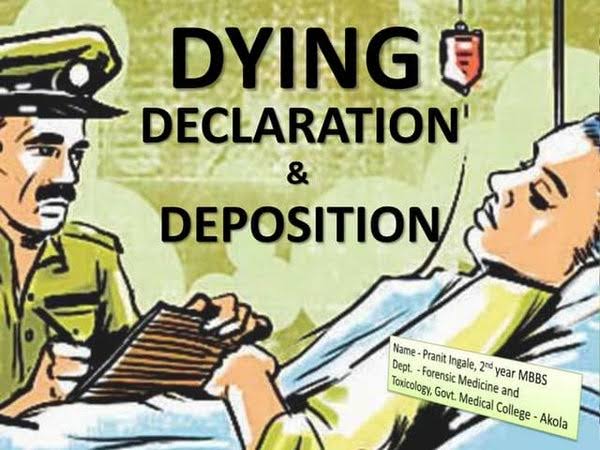R.M. Savant, J.@mdashHeard the learned Counsel for the parties. With the consent of the parties heard finally at the admission stage.
2. The above Second Appeal takes exception to the judgment and decree dated 4th August 2010 passed in Regular Civil Appeal No. 48/2007; by which the judgment and decree passed by the Trial Court in Regular Civil Suit No. 163/1997 came to be set aside and the suit came to be dismissed.
3. The Appellants are the original Plaintiffs, who had filed the said Regular Civil Suit No. 163/1997 for declaration and 4 correction of revenue record in respect of the suit tank, more specifically described in para 2 of the plaint. The suit property is old Khasra No. 107, which is now part of Gat No. 47 wherein the suit water tank known as Mahuri Bodi. The Plaintiffs and the Defendants claim through a common ancestor Ladkanbapu. The Plaintiffs'' father is one Premlal, who was the grandson of Ladkanbapu, whereas the father of Defendant No. 4 Giridhar was the son of one Gumanbhau, who was the son of said Ladkanbapu. It was the case of the Plaintiffs that the ancestral property had undergone partition whereby the said Premlal and the said Gumanbhau were enjoying the property separately.
4. It was the case of the Plaintiffs that the suit property had come to the share of the said Premlal and that after the death of said Premlal, the Plaintiffs were in exclusive possession of the said property. The cause for filing of the said suit was that the Defendant No. 4 had filed an application for correction of the record of rights. The Plaintiffs came to know of the said fact on 1.10.1996 when they obtained certified copy of the 7/12 extract. The Defendant No. 4 taking advantage of the said order dated 1.10.1996 had come on the site and obstructed the Plaintiffs from fishing in the tank.
5. The Defendants in their written statement took a stand that they were owners of the suit property and that it was jointly owned and possessed by Premlal and Defendant No. 4 and that on 19.12.1973 the Plaintiffs'' father had applied for mutation of the said suit tank only in his name and accordingly, the name of Defendant No. 4 was deleted vide mutation entry No. 189 which resulted in the Defendant No. 4 filing a complaint before the higher revenue authority and by an order dated 16.5.1996 the name of Defendant No. 4 was reinstated.
6. It was the case of the Defendants that the said order was not challenged by the Plaintiffs before the next higher authority and, therefore, the Plaintiffs do not have right to file the suit. It was, therefore, case of the Defendants that Khasra No. 107, area 5.83 acres i. e. suit tank is used for irrigation of lands of both the brothers and as such there was joint ownership of both brothers which has continued from the past the Defendants denied the exclusive ownership of the Plaintiffs.
7. Based on the pleadings, the Trial Court framed relevant issues. The Trial Court on the basis of the evidence that was adduced before it decreed the suit. The Trial Court considered the 6 mutation entry at (Ex. 80), notice (Ex. 34) addressed by one Advocate M. R. Ghodichore, notice (Exhibit 61) under the Maharashtra Agricultural Land (Ceiling and Holding) Act and the copy of Wajib-Ul-Arz (Ex. 62). Notice (Ex. 117) which is also notice under Maharashtra Agricultural Land (Ceiling and Holding) Act came to the conclusion that the said documentary evidence suggests that since long the father of the Plaintiff Nos. 1, 2, 4 to 7 namely Premlal was in possession of the suit tank. The Trial Court resultantly issued declaration in favour of the Plaintiffs that they are exclusive owners of said Gat No. 107 at mouza Kelwad.
8. Being aggrieved by the decree of the Trial Court dated 8th December, 2004 the Defendants filed Regular Civil Appeal No. 48/2007. In view of the finding of the Trial Court that the partition between the various branches was proved and in the absence of any direct evidence on the said aspect, the Appellate Court on a reappreciation of the documentary evidence which was on record came to the conclusion that the Trial Court had misinterpreted and misread the document (Exhibit 80) as well as notice Exhibit 34 of which much reliance was placed on behalf of the Plaintiffs in the Trial Court. Significantly, reading of the order of the First Appellate Court makes it clear that the Appellate Court has not referred to the 7 document known as WajibUlArz or by notices under the Maharashtra Agricultural Land (Ceiling and Holding) Act namely Exhibit 61 and 117 which were issued to Premlal and Gumanbhau though whom the Plaintiffs and Defendants are claiming. In fact, there is no discussion at all in the judgment of the First Appellate Court concerning the aforesaid three documents. It is well settled by the judgments of the Apex Court that the First Appellate Court has to come to close quarters with the findings recorded by the Trial Court if it wants to upset the findings recorded by the Trial Court and assign its own reasons a useful reference would be made to the judgment of the Apex Court reported in 2001 (2) Mh. L. J. 786 in the matter of Santosh Hazari v. Purushottam Tiwari deceased by L. Rs. Paragraph 15 of the said report is material and is reproduced hereunder:
A perusal of the judgment of the trial Court shows that it has extensively dealt with the oral and documentary evidence adduced by the parties for deciding the issue on which the parties went to trial. It also found that in support of his plea of adverse possession on the disputed land, the Defendant did not produce any documentary evidence while the oral evidence adduced by the Defendant was conflicting in nature and hence unworthy of reliance. The first Appellate Court has, in a 8 very cryptic manner, reversed the finding on question of possession and dispossession as alleged by the Plaintiff as also on the question of adverse possession as pleaded by the Defendant. The Appellate Court has jurisdiction to reverse or affirm the findings of the trial Court. First appeal is a valuable right of the parties and unless restricted by law, the whole case is therein open for rehearing both on questions of fact and law. The judgment of the appellate Court must, therefore, reflect its conscious application of mind, and record findings supported by reasons, on all the issues arising along with the contentions put forth, and pressed by the parties for decision of the Appellate Court. The task of an Appellate Court affirming the findings of the trial Court is an easier one. The Appellate Court agreeing with the view of the trial Court need not restate the effect of the evidence or reiterate the reasons given by the trial Court; expression of general agreement with reasons given by the Court, decision of which is under appeal, would ordinarily suffice (See Girijanandini Devi and Ors. v. Bijendra Narain Choudhary AIR 1967 1124) . We would, however, like to sound a note of caution. Expression of general agreement with the findings recorded in the judgment under appeal should not be a device or camouflage adopted by the Appellate Court for shirking the duty cast on it. While writing a judgment of reversal the appellate Court must remain conscious of two principles. Firstly, the findings of fact based on conflicting evidence arrived at by the trial Court must 9 weigh with the Appellate Court, more so when the findings are based on oral evidence recorded by the same presiding Judge who authors the judgment. This certainly does not mean that when an appeal lies on facts, the Appellate Court is not competent to reverse a finding of fact arrived by the trial Judge. As a mater of law if the appraisal of the evidence by the trial Court suffers from a material irregularity or is based on inadmissible evidence or on conjectures and surmises, the Appellate Court is entitled to interfere with the finding of fact (See
9. The substantial question of law, therefore, that arises for consideration is viz. Whether the First Appellate Court could have reversed the findings of the Trial Court without considering the documents (Ex.34, 117, 61 and 62)?. In my view, having heard the learned Counsel for the parties and considering the judgment of the Apex Court in Santosh Hazari (supra) the Appellate Court in reversing the judgment of the Trial Court has failed to advert to the principles enunciated in the said judgment by not even adverting to the documentary evidence (Exhibits 34, 61, 117 and 62). For the said limited purpose, the impugned judgment and decree of the First Appellate Court is required to be set aside and the matter is 11 required to be relegated back to the First Appellate Court for denovo consideration of the said Regular Civil Appeal No. 40/2007. The Appellate Court to record its findings in respect of exclusivity of possession as claimed by the Plaintiffs by considering the entire documentary evidence including the above four documents. On such remand, the First Appellate court to decide the appeal by 31st October, 2011.
10. The above Second Appeal is accordingly allowed with no order as to costs.

